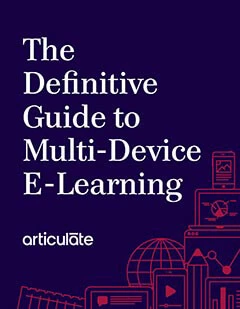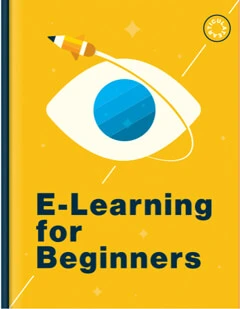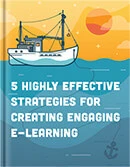Storyline 3: Slide Content Is More Accessible
Article Last Updated
This article applies to:
We want to empower people to live better lives. As part of that mission, we’re focused on giving authors the tools to easily create e-learning courses that are truly accessible for all learners. In June 2020, we introduced the accessible player for Storyline 3, which makes player navigation much easier for screen reader users and keyboard-only users. And we’re releasing a series of enhancements to make slide content more accessible too.
Check out the latest accessibility enhancements below. Then see what we’re working on next in our quest to make Storyline 3 courses inclusive and accessible.
Screen Readers Don’t Auto-Read Content
Screen readers don't auto-read slide content in Storyline 3 courses. Auto-reading content is a common web practice, but it isn’t the best experience for e-learning courses. When a screen reader auto-reads content, it can cause overlapping audio with narration or video content, requiring learners to pause either the screen reader or the slide content so they can hear each in turn.
We want learners to have an enjoyable experience, so a screen reader announces the title of each slide and then waits for the learner to explore the content. This allows the learner to hear multimedia first. It also lets the learner control when the screen reader announces content. Learners simply use their screen reader navigation keys (e.g., the Down and Up arrows) to move through items on the slide.
Navigation Is Easier
Prior to June 2020, screen reader users and keyboard-only users tabbed to every object on each slide. That method was technically accessible, but it was tedious. So we optimized slide navigation to make it more familiar to screen reader users and reduce the number of keystrokes required for keyboard-only users.
Now, the focus order that you define for each slide in Storyline 3 controls the reading order for screen readers as well as the tab order for interactive elements, such as buttons, hotspots, and data-entry fields. Here’s how it works.
|
Screen Reader Users |
Keyboard-Only Users |
|
Learners use their screen reader navigation keys (e.g., Down and Up arrows) to move through all text and interactive objects on the slide, listening to each item along the way. When learners want to skip text and images, they can use Tab and Shift+Tab to jump from one interactive object to another. Press the spacebar or the Enter key to activate an interactive object, such as a button or hotspot. |
Learners who use keyboard-only navigation without a screen reader for mobility reasons press Tab and Shift+Tab to move from one interactive object to another on the slide. Press the spacebar or the Enter key to activate an item. Since keyboard-only users can see text and images, these objects get skipped when tabbing through the slide content. This reduces the number of keystrokes needed to navigate the slide. |
Pro Tip: See how accessible navigation works for slides with button sets, such as multiple choice questions.
Objects Are More Accessible
Slide objects are rendered as complete, semantic HTML elements that follow best practices for web accessibility. This means learners can use a broader array of assistive technologies, such as screen readers, to navigate Storyline 3 courses much the same way they browse web pages.
Here are the latest improvements learners will notice:
- Text is treated as normal document text by screen readers.
- Learners with accessibility needs can change the visual appearance of text in a published course to make it more readable. Learn more about accessible text.
- You can use text styles to control the visual appearance of text elements and make content easy to navigate with a screen reader.
- Text publishes with the proper semantic formatting for headings, links, lists, and other elements so screen reader users can explore content easily.
- Interactive objects are correctly identified to assistive technologies and function as expected. For example, screen readers properly announce radio buttons with their labels and current states.
- Hotspots, drop-down lists, and markers are now keyboard-accessible so learners can activate them without using a mouse.
- Video controls are keyboard-accessible, allowing learners to play, pause, seek, and adjust the volume.
- Slide layers and lightboxes work reliably with screen readers.
- Modal dialogs that require learner interaction automatically receive focus.


